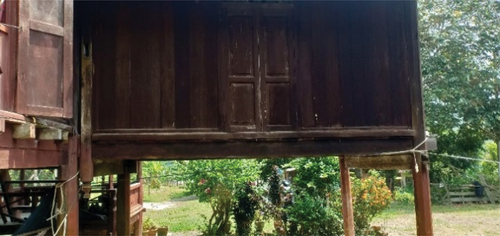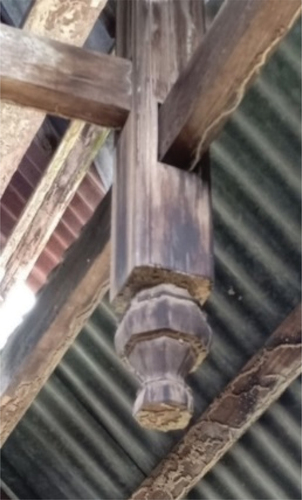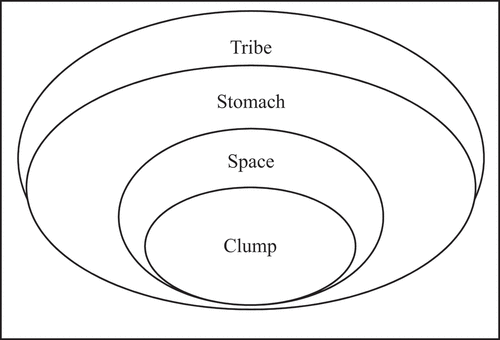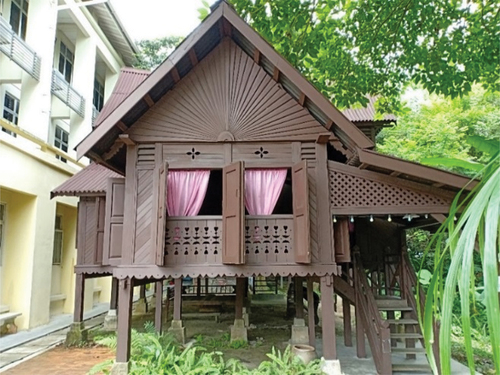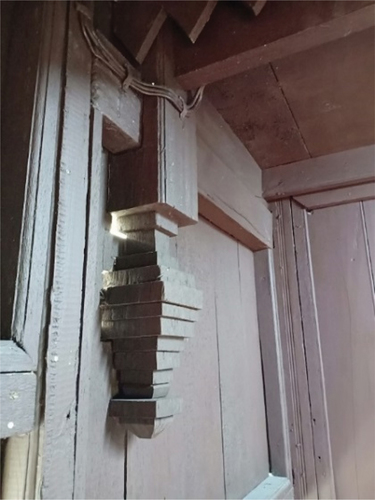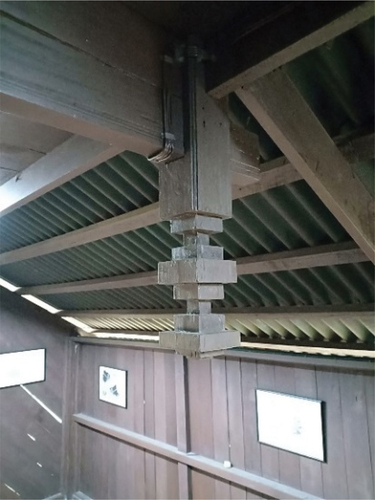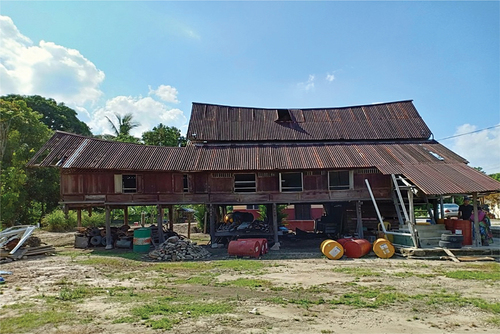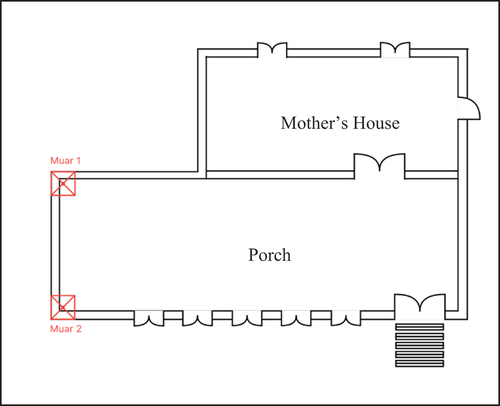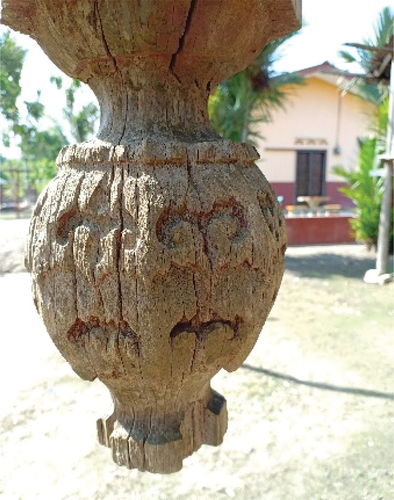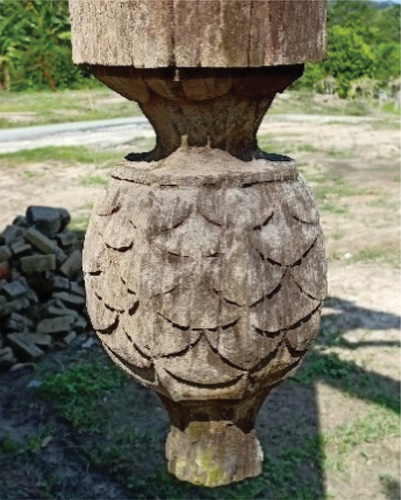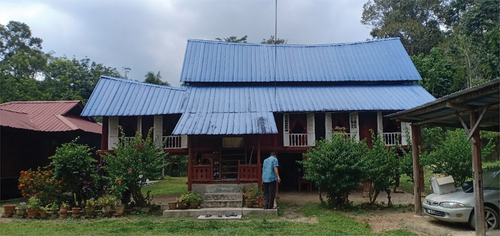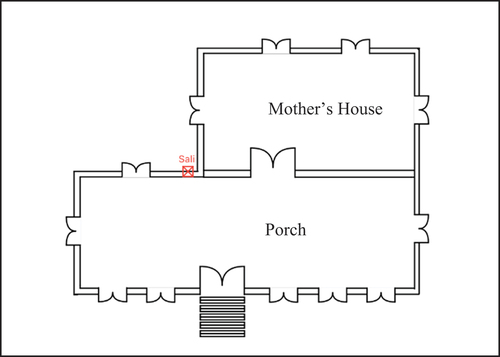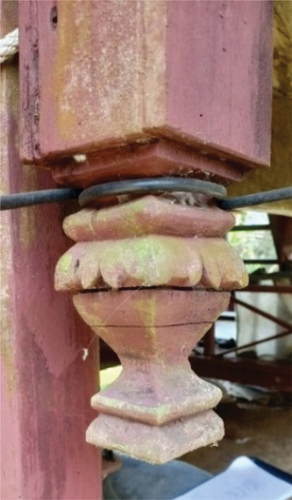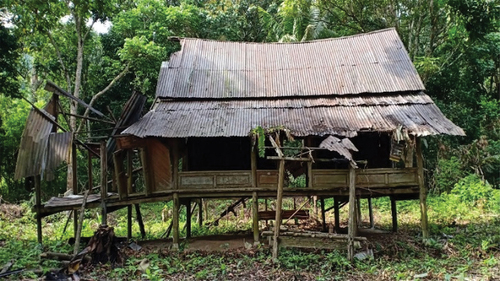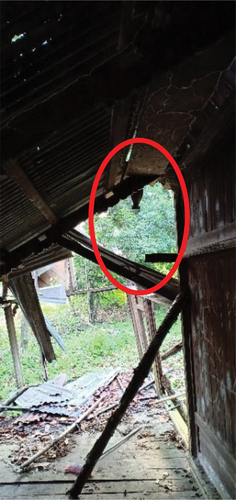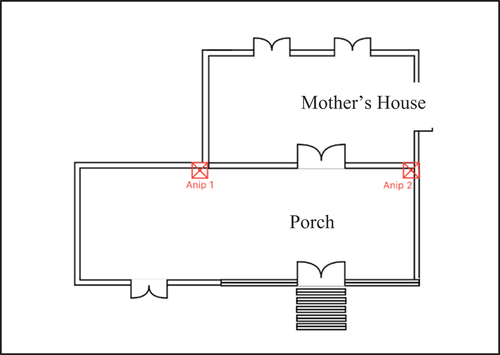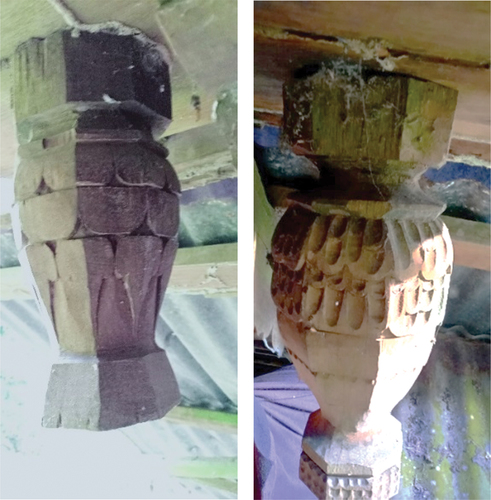Figures & data
Figure 3. The sketches illustrate the separation of space involving the porch and the mother’s house (Latif & Kosman, Citation2017).

Figure 5. The layout presents from the upper view the position of buah buton with the name Diwangsa.
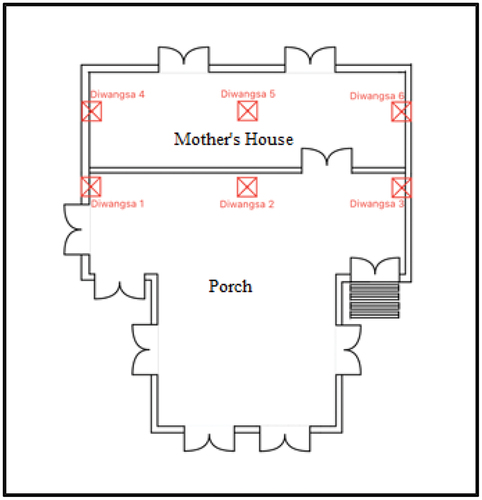
Table 1. The information about Dato’ Raja Diwangsa’s house
Table 2. The information about Dato’ Muar Bongkok’s house
Table 3. The information about Sali’s house
Table 4. The information about Anip’s house
Table 5. List of informants along with their answers
Figure 19. A five-inch-tall platform located at the end of the porch of Dato’ Muar Bongkok’s house as respect for the customary leader by his subordinates.
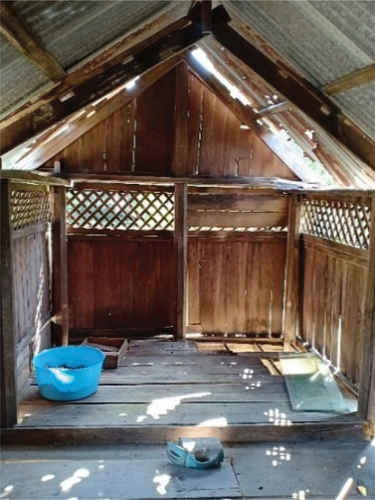
Figure 20. Red circles depict the hanging position of the two buah buton (Muar) on the ground at the end of the porch, indicating that the house’s occupant or original owner (Penghulu Na’am) is a powerful individual in the Adat Perpatih.
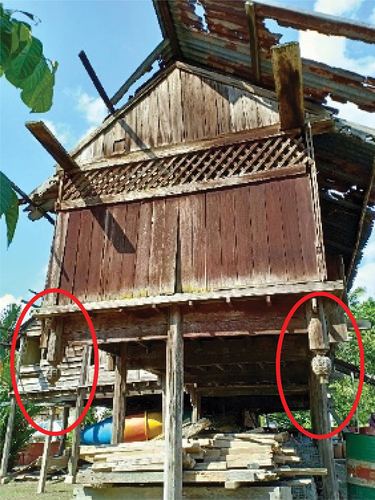
Figure 21. Red circles demonstrate the position of the buah buton at the porch space, indicating the position is passed down from generation to generation.
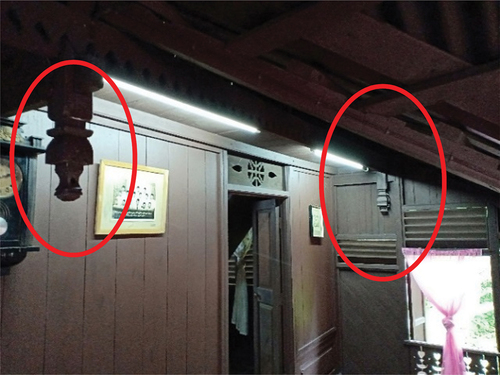
Figure 22. The rear view of Sali’s house demonstrating the placement of the buah buton (red circle) hanging from the ground as a section is divided by borders of varying widths, guiding principles on humanity’s relationship with God, which demonstrates that leaders and communities rely on each other.
